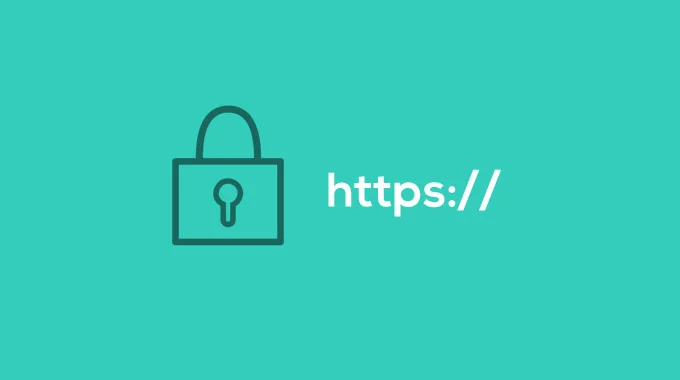SSL Monitoring 101: Essential Strategies for Safeguarding Your Website’s Security and Ensuring Optimal Performance
Essential Strategies for SSL Monitoring

Introduction
In today’s digital landscape, securing your website against cyber threats is not optional—it’s essential. One key aspect of maintaining website security is SSL (Secure Sockets Layer) monitoring. SSL certificates play a critical role in encrypting data between your website and its visitors, ensuring that sensitive information remains protected. However, SSL certificates require continuous monitoring to remain effective.
This guide delves into the fundamentals of SSL monitoring, offering practical strategies for ensuring your website’s security and performance. From understanding the role of SSL certificates to implementing monitoring best practices, this comprehensive guide will equip you with the knowledge needed to protect your online presence.
Understanding SSL Certificates
What is an SSL Certificate?
An SSL certificate is a digital certificate that provides encryption for data transmitted between a user’s browser and a web server. This encryption helps to secure sensitive information, such as login credentials and payment details, from being intercepted by unauthorized parties.
How SSL Certificates Work
SSL certificates use encryption algorithms to protect data during transmission. Here’s a simplified overview of the process:
- Handshake: The browser and server establish a secure connection through an initial handshake.
- Encryption: Data exchanged between the browser and server is encrypted using a unique encryption key.
- Decryption: The data is decrypted by the receiving party, ensuring it remains secure throughout the transmission process.
The Importance of SSL Monitoring
Preventing Security Breaches
Regular SSL monitoring is crucial for identifying potential vulnerabilities that could be exploited by attackers. By continuously overseeing your SSL certificates, you can:
- Detect Expired Certificates: Avoid the risk of using expired certificates, which can leave your website vulnerable to attacks.
- Identify Misconfigurations: Ensure that SSL certificates are configured correctly to prevent security gaps.
Enhancing Website Performance
SSL monitoring isn’t just about security; it also impacts website performance. Properly managed SSL certificates contribute to:
- Faster Load Times: Well-configured SSL certificates can improve website performance by optimizing the encryption process.
- Reliable User Experience: Ensuring SSL certificates are functioning correctly helps maintain a seamless user experience, reducing the likelihood of security warnings.
Ensuring Compliance
Many industries have regulatory requirements regarding data protection. SSL monitoring helps ensure compliance with these standards by:
- Maintaining Valid Certificates: Keeping SSL certificates up-to-date to meet industry regulations.
- Providing Audit Trails: Offering detailed reports and logs to demonstrate compliance during audits.
Effective SSL Monitoring Strategies
Implementing Automated Monitoring
Automated SSL monitoring tools are essential for managing SSL certificates efficiently. Key features to look for include:
- Expiration Alerts: Receive notifications well before certificates expire to ensure timely renewal.
- Configuration Checks: Automated checks for SSL certificate configurations to identify and resolve issues promptly.
Choosing the Right Monitoring Tools
Selecting the right SSL monitoring tools can significantly impact your security management. Consider tools that offer:
- Comprehensive Coverage: Monitor all your SSL certificates, including those for subdomains and multiple domains.
- User-Friendly Interfaces: Tools with intuitive interfaces make it easier to manage and interpret SSL status information.
Recommended SSL Monitoring Tools
- Comodo SSL Monitoring: Provides real-time alerts and comprehensive reports for SSL certificate management.
- Digicert CertCentral: Offers automated SSL management and monitoring with detailed analytics.
- SSL For Free: A free tool for checking SSL certificate status and configuration issues.
Regularly Updating SSL Certificates
Keeping SSL certificates updated is critical for maintaining security and performance. Regularly review and renew certificates to:
- Prevent Expiration: Avoid disruptions caused by expired certificates.
- Address Vulnerabilities: Ensure that certificates use the latest encryption standards and security protocols.
Conducting Routine Security Audits
Performing regular security audits helps identify and address potential issues before they become critical. Routine audits should include:
- SSL Configuration Reviews: Check for any misconfigurations or vulnerabilities in SSL certificates.
- Performance Assessments: Evaluate the impact of SSL certificates on website performance and make necessary adjustments.
Common Challenges in SSL Monitoring
Managing Multiple Certificates
For organizations with numerous SSL certificates, managing and monitoring them can be challenging. Solutions include:
- Centralized Management: Use centralized tools to manage and monitor all SSL certificates from a single dashboard.
- Automated Renewal: Implement automated renewal processes to streamline certificate management.
Responding to SSL Issues
Timely response to SSL issues is crucial for maintaining security and performance. Develop a response plan that includes:
- Immediate Actions: Steps to address expired or misconfigured certificates promptly.
- Communication Protocols: Procedures for notifying stakeholders and users about potential issues and resolutions.
Future Trends in SSL Monitoring
Advanced Threat Detection
The future of SSL monitoring will likely involve advanced threat detection technologies, such as:
- AI and Machine Learning: Tools that use AI to predict and detect potential vulnerabilities before they become threats.
- Behavioral Analytics: Monitoring tools that analyze SSL usage patterns to identify anomalies and potential security risks.
Integration with Broader Security Solutions
As cybersecurity evolves, SSL monitoring tools will increasingly integrate with other security solutions, such as:
- Web Application Firewalls: Combining SSL monitoring with WAFs for enhanced protection against cyber threats.
- Intrusion Detection Systems: Integrating SSL monitoring with IDS for comprehensive threat detection and response.
Conclusion
SSL monitoring is a critical aspect of maintaining a secure and high-performing website. By implementing effective monitoring strategies, selecting the right tools, and addressing common challenges, you can safeguard your online presence from cyber threats and ensure a positive user experience. Stay proactive in managing your SSL certificates to protect sensitive data, enhance website performance, and comply with industry regulations.
Call to Action:
Take control of your website’s security by adopting comprehensive SSL monitoring practices today. Ensure your SSL certificates are always up-to-date and functioning correctly to maintain a secure and trusted online presence.



